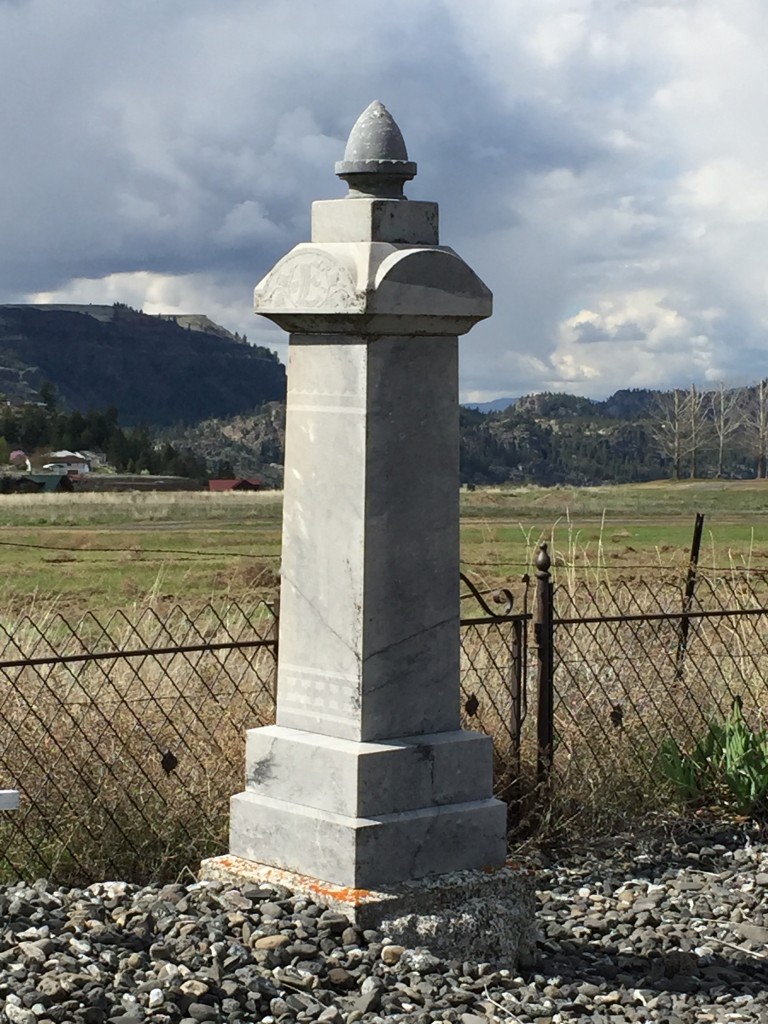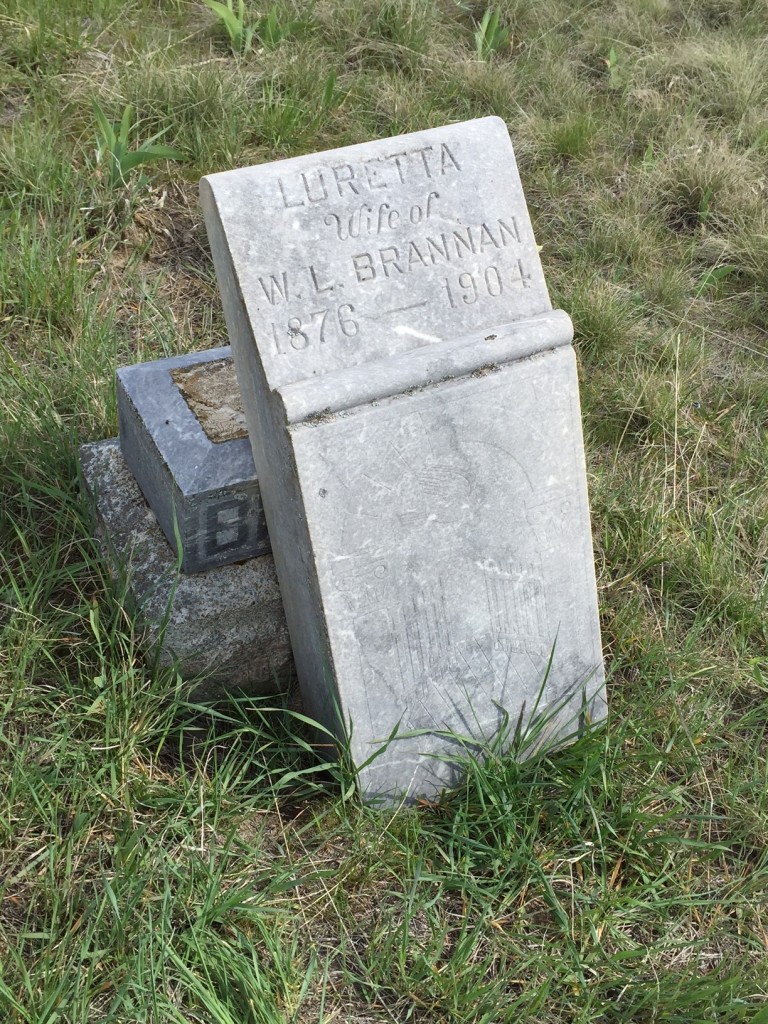I’m visiting family in Spokane, Washington, so today’s post is a rerun of a post from April 14, 2015, which was inspired by a previous visit to Spokane. Enjoy!
——————————————————————————————–
I just returned from spending a week with my family in Washington, and even though I previously lived there for thirty years, it’s nice to know that I can still discover new and interesting stuff.
My sister and her family moved about 65 miles from Spokane to Lincoln a couple of years ago. Since the sawmill in Lincoln closed in the 1980s, there isn’t much in the way of commercial enterprise. There is a boat launch to access Lake Roosevelt, and an RV park if you want to stay and play for a few days on the lake. There are none of the standard American community offerings, like restaurants, churches or bars.
But there is a fascinating bit of history in Lincoln at the Peach Cemetery. This is not like the cemeteries we see all the time, those with orderly rows of headstones. This area, enclosed by wire fencing, has headstones placed with no obvious organization and large sections that appear to have nothing at all.
It turns out that there was once a town called Peach at the confluence of the Columbia River and Hawk Creek, situated perfectly for growing fruit orchards. A U.S. post office was established in Peach in 1898 and by 1900 there were about forty families using their land for peach, plum, apricot, pear, apple and cherry orchards. By 1917, Peach was a community of about 300 people and had a school for grades one through ten, a hotel, a grocery, a feed store and a church. They used the railroad that stopped in nearby Creston to ship their fruit to other parts of the country. Everything seemed to be going well.
Then came Grand Coulee Dam. This dam is the largest facility in the United States producing electric power, and was built on the Columbia River, creating a reservoir covering 150 miles. This reservoir was named Franklin D. Roosevelt Lake, but now everyone just calls it Lake Roosevelt.
Peach was one of ten towns large enough to have a post office that would be displaced by the reservoir. The federal government paid landowners to vacate, requiring that they vacate by January 1, 1939 and the residents of Peach dispersed rather than relocating. Homes were either moved to higher ground or were burned along with the orchards. Stumps were blasted out with dynamite. A sign at the boat launch states that nearly 5,000 structures were either moved or burned.
Clearing the land to prepare for the reservoir was the responsibility of the Works Projects Administration (WPA), who employed more than 2,000 people for that purpose. They were to clear everything that might later float to the surface, although my dad said that when the water level is really low you can still see tree stumps on the bottom that were not completely cleared. In April of 1939 the post office was officially decommissioned, and by July, everything was gone.
Along with the homes, businesses, orchards and road, there were also cemeteries. Peach had one cemetery on high ground, but the remains from two others, the W.L. Brannon Cemetery and the W.H. Balcom Cemetery, were moved in 1939. Relocation was the responsibility of the Ball & Dodd Funeral Home in Spokane. Not all graves were relocated to Peach Cemetery in Lincoln. Many were relocated, I’m assuming at the request of the families, to nearby Creston.
The early records are lacking in detail, but the relocated cemetery has been walked and had the headstones recorded several times over the years by interested people and associations. The headstones date from 1892 to 1953. Rosters of the graves were created in 1968 and 1974, but I couldn’t find any original records detailing the graves that were relocated. There are a number of unknown and unmarked graves, and several of the stones on the previous rosters are no longer there. A volunteer group of local residents clean the cemetery annually, mowing the weeds and removing any trash.
There was a documentary filmed that is available for viewing at museums in Davenport and Wenatchee, but I didn’t have the opportunity to see it, so I am not sure what information it provides or even when it was filmed.
An interesting thing about local history is that there are often connections to people you know. A lady who has been a family friend for almost thirty years knew some of her family had lived in Peach, but had no idea about the relocated graves, or that her family was represented in this cemetery.
There were more than fifty cemeteries in the flooded area, many of them Native American burial grounds, but that is another story for another day.








